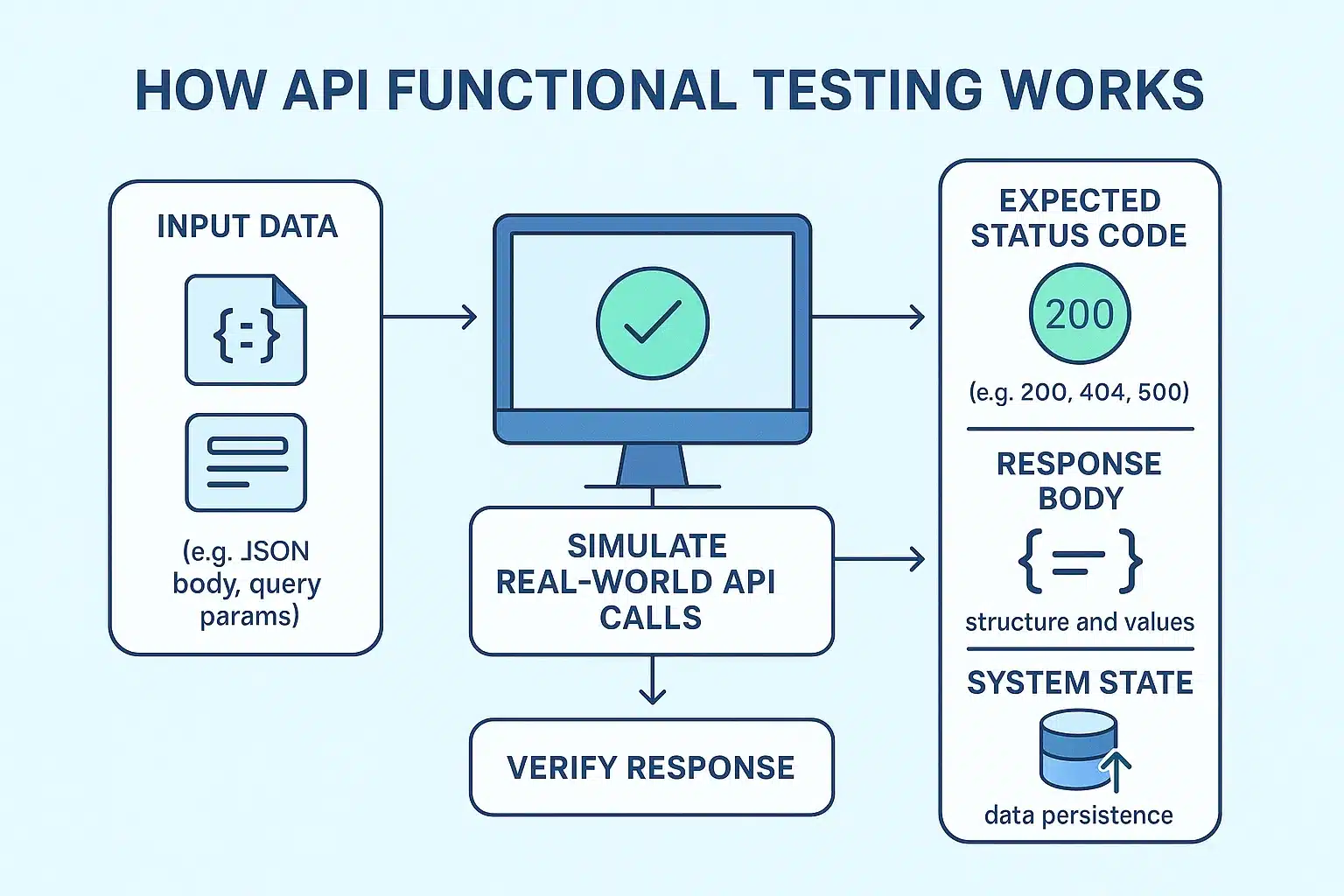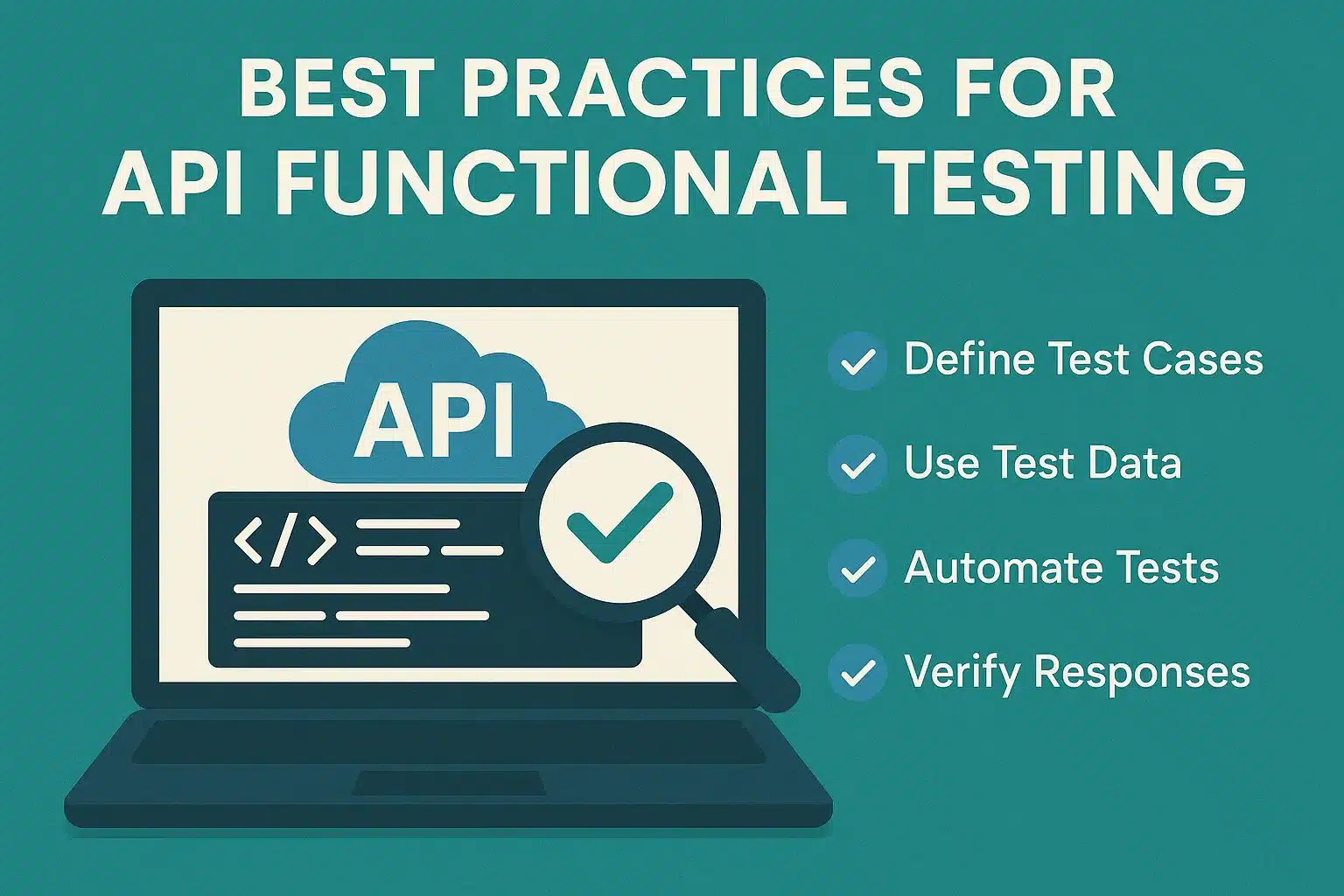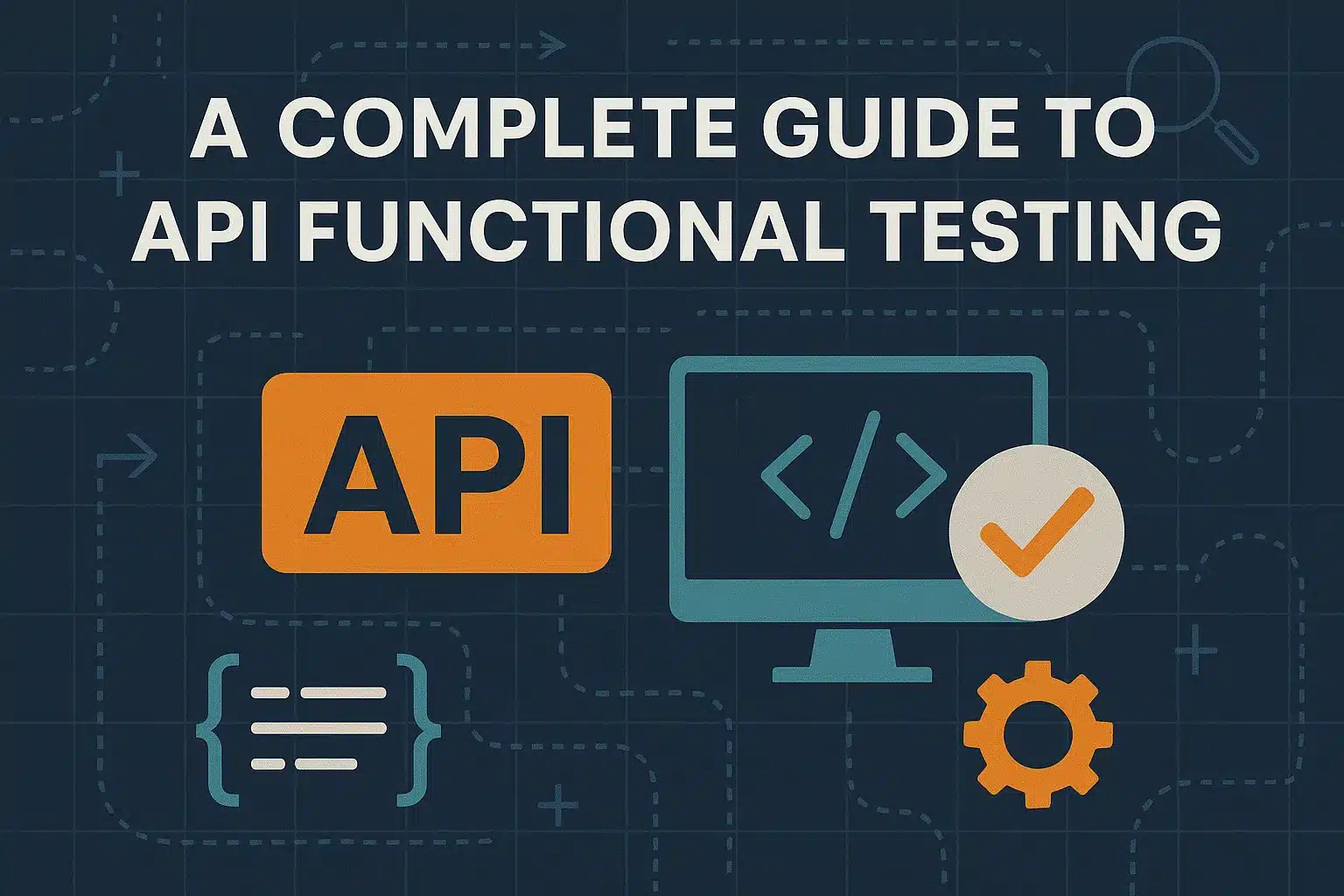Imagine deploying a sparkling new feature in your app that performs flawlessly in testing, but when it goes live, it all comes crashing down. Orders won’t process, data won’t sync, and ultimately, the users encounter dead ends.
What is wrong? Most typically, the problem is with the APIs not doing what they are supposed to. This is exactly what API functional testing guards against. It guarantees your APIs are performing what they must, technically, in fact, but from a business and user standpoint.
In this blog, we’re going to guide you through all you need to know about API functional testing, how it works, why it’s important, and how to do it correctly.
What Is API Functional Testing?
API functional testing is the testing of software that checks whether an API behaves according to the business logic defined during its creation. It is not interested in the underlying system architecture or database. It is concerned with whether the output of the API is correct for an input. That means, it inquires: Does this API endpoint do what it should?
Unlike performance or load testing, which put the speed or stability of the API to test, functional testing guarantees that every endpoint returns the correct result in normal and edge cases.
Why Is API Functional Testing Important?
APIs are the foundation of modern software — the glue that keeps services, apps, and users connected. It only takes a small failure of API behavior to have a drastic impact on business logic and user experience.
Here is why functional API testing is so important:
-
It tests core business flows like user registration, paying, or ordering.
-
Reduces the risk of releasing broken functionality to production
-
Catches logic errors early in the development process.
-
Enhances team confidence at releases and deployments.
In brief, API functional testing ensures your backend actually enables what the frontend and users anticipate.
How API Functional Testing Works?
The process is quite simple. Functional testing makes API endpoint requests and checks whether the response received is as expected.

The major pieces are:
-
Input data (JSON body, query params)
-
Expected status code (200, 404, 500)
-
Response body structure and values
-
Changes to system state or data persistence
You create test cases that mimic actual API calls and verify that the response is accurate. These test cases are automated by tools or continuous validation frameworks.
API Functional Testing Examples
For a better understanding of how it functions in the real world, some instances of functional testing are presented below:
- Login Endpoint
Request: POST /api/login with proper credentials
Expectation: 200 OK and access token returned
- Product Search Endpoint
Request: GET /api/products?q=shoes
Expectation: 200 OK and a list of matching products
- Order Creation Endpoint
Request: POST /api/orders with valid cart details
Expectation: 201 Created and confirmation with order ID
- Profile Update Endpoint
Request: PATCH /api/user with updated fields
Expectation: 200 OK and updated profile in response
These are typical API functional testing examples to guarantee the business processes they represent really work.
Functional vs Non-Functional API Testing
API functional testing is all about what the API does. In contrast, non-functional testing checks how well it does it.

Non-functional testing comprises:
-
Load testing
-
Scalability testing
-
Response time under load
-
Security and vulnerability testing
Though both are important, functional comes first. There’s no use in performance testing an API that does not return accurate data.
Top API Functional Testing Tools
Selecting the right tools can make your testing easier. Here are some useful and popular API functional testing tools:
Keploy
Generates functional test cases and mocks automatically from actual production traffic. Ideal for teams that desire low maintenance with high coverage.
Postman
Commonly used for manual and automated REST API testing. Includes scripting and collections
SoapUI
Specialized in SOAP and REST APIs. Suitable for enterprise use and data-driven tests.
Karate
Integrates API testing and BDD. Easy-to-read syntax for test cases, and easy to write.
Katalon Studio
Provides a low-code testing platform. Ideal for teams with poor coding expertise.
These functional testing tools assist teams in automating test coverage, minimizing regression problems, and accelerating development cycles.
Best Practices for API Functional Testing
You can try and maximize functional testing by using the following best practices:
1. Test positive and negative scenarios
Don’t test expected inputs alone — test how your API behaves for bad data as well.
2. Test automation
Functional testing should be included in your CI/CD pipeline to detect bugs early.

3. Check the structure
Utilize schema validation to detect breaking changes in response structures.
4. Mock dependencies
When your API depends on third-party services, mock them for consistency.
5. Realistic test data
Wherever possible, draw your test data from production-like situations.
6. Maintain test version-controlled
Treat test scripts as code — version them and review them periodically.
Why Choose Keploy for API Functional Testing?

Keploy offers a new way of doing API functional testing through automatic test case and mock creation straight from your API traffic. That means you no longer need to write or keep updating test cases manually whenever your API is modified. It diminishes the test maintenance overhead risk and guarantees that your tests are tied to real-world usage.
By becoming an integral part of your current CI/CD pipeline, Keploy enables teams to test faster with greater accuracy at lower effort. It is particularly helpful for agile teams who need high test coverage but do not wish to impede their development pace.
Looking Ahead
API functional testing will become increasingly important as systems become more complex and interconnected. Trends in the future seem to revolve around the following aspects:
-
Test generation from OpenAPI or Swagger specs
-
More AI use to develop and sustain tests
-
Deeper integration with observability platforms
-
Shift-left testing natively integrated into developer workflows
Spending on good functional testing now reaps returns later — fewer bugs, quicker releases, and happier customers.
FAQs
1. What is the difference between API functional testing and integration testing?
API functional testing verifies the behavior of a single API endpoint given anticipated input and output. Integration testing is concerned with how various modules or services integrate. Both are important, but functional testing is usually done first and is more detailed.
2. Is it possible to write functional tests without a frontend application?
Yes, API functional tests can be performed independently of the frontend. Indeed, most teams test APIs prior to the UI being created, employing tools that make requests and check responses.
3. How can I tell which endpoints should be prioritized for functional testing?
Start with critical business flows like authentication, transactions, and data operations. Also, use traffic monitoring or production logs to identify high-usage endpoints to get the most bang for your testing buck.
4. Is API functional testing applicable only for REST APIs?
Not at all. API functional testing applies to REST, SOAP, GraphQL, gRPC, and other API protocols. The fundamental concept is to check against business logic — the protocol merely specifies how requests and responses are formatted.
5. How can Keploy lower the effort in functional testing?
Keploy automatically generates tests from actual user traffic, without the need to write or keep up-to-date with manual tests. It also mocks downstream dependencies, so you can test in isolation without establishing complicated environments.


Leave a Reply